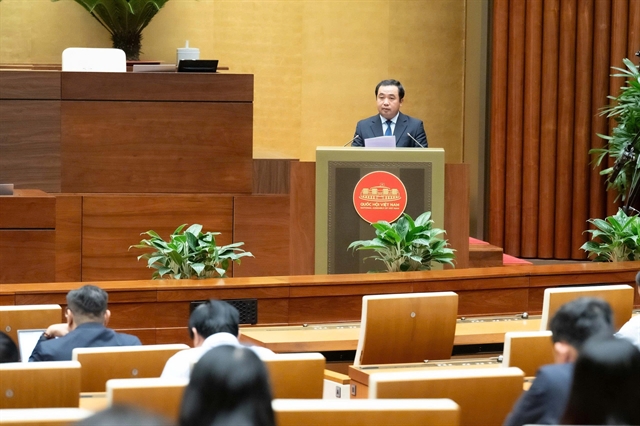 Life & Style
Life & Style


|
| The stilt houses are located close together in Mường Lay Town. — VNA/VNS Photo |
ĐIỆN BIÊN — Mường Lay Town, located in Điện Biên Province, has been officially recognised by the Việt Nam Record Organisation as "the town with the highest density of traditional stilt houses of the Thái ethnic group, specifically the White Thái branch, in Việt Nam."
Acting Chairman of the People's Committee of Mường Lay Nguyễn Đạt Long said that the town boasts a rich history and vibrant cultural traditions. It is home to a diverse array of ethnic groups, with the Thái ethnic group and the White Thái branch representing a significant portion of the population.
The community has collaboratively constructed thousands of traditional stilt houses, creating a unique architectural landscape that harmonises contemporary living with traditional cultural spaces in the northwest.
Primary materials used in the construction of these stilt houses include high-quality termite-resistant wood. The roofs are often covered with a variety of materials, such as cogon grass, black stone, tiles or corrugated iron, depending on each family's economic circumstances.
The building process is carried out through close community collaboration, applying traditional craftsmanship, precise calculations and solidarity. These stilt houses are typically situated at the foot of mountains, along valleys or near expansive fields, forming cohesive village communities that share a common culture and contribute to the preservation and development of national cultural identity.
Currently, Mường Lay Town has 1,192 households with traditional stilt houses out of a total of 3,198 households, resulting in a density of approximately 10.58 houses per square kilometre. This figure significantly exceeds that of other localities with similar ethnic groups, underscoring Mường Lay's status as the area with the largest concentration of traditional stilt houses belonging to the White Thái ethnic group.
Vice Chairman of the Điện Biên Provincial People's Committee Phạm Đức Toàn said that the recognition confirms the cultural value of the traditional stilt houses of the White Thái people in Mường Lay.
These houses serve not only as residences, but also as sacred cultural symbols deeply intertwined with the community's spiritual life. The recognition has honoured these stilt houses as a "living museum," preserving a trove of folk knowledge, traditional architectural techniques and indigenous cultural values.
Going forward, local authorities are encouraged to leverage this recognition to promote tourism development and enhance the material and spiritual lives of the residents.
Achieving this record is merely a means to an end, Toàn said. It is essential to continue nurturing and maintaining the unique rituals and customs of the White Thái people, such as the Then Kin Pang Festival, Xòe dance and folk songs, thereby preserving the essence of national culture and elevating the cultural significance of the stilt houses of White Thái people in Mường Lay. VNS




